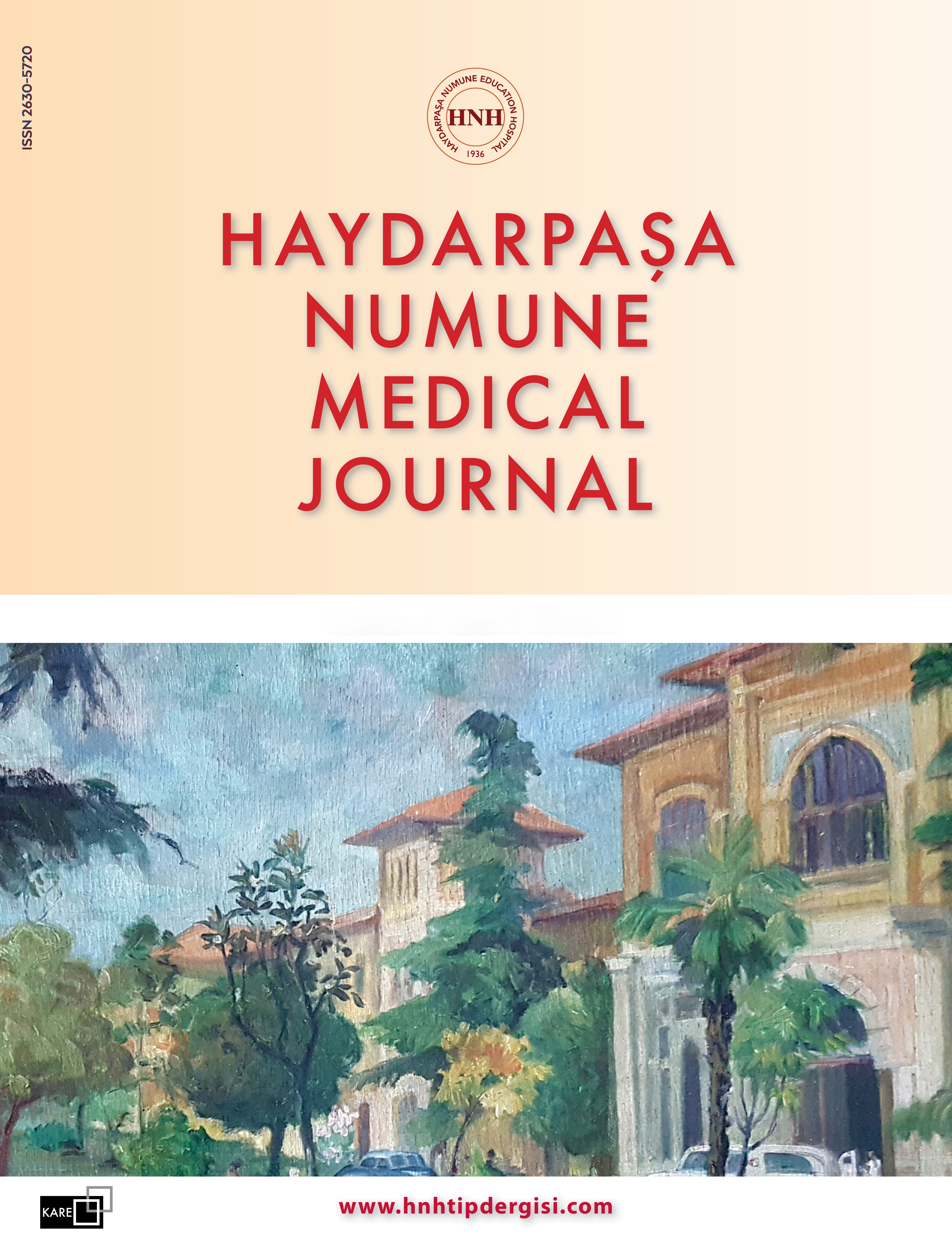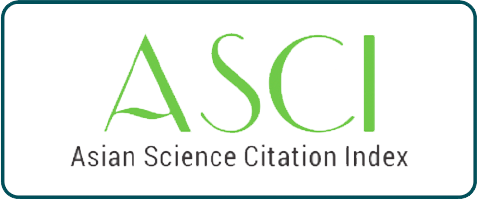Volume: 50 Issue: 2 - 2010
| RESEARCH ARTICLE | |
| 1. | The Role of Carbondioxide Angiography in Blunt Splenic Trauma Aslıhan Semiz Oysu, Kyung J. Cho, Sinan Şahin Pages 59 - 64 INTRODUCTION: Digital subtraction angiography plays an important role in blunt splenic trauma. Carbondioxide is an alternative intravascular contrast medium with a low cost and no risk of allergy or known toxicity. The purpose of this study is to evaluate the efficacy of carbondioxide angiography in patients with blunt splenic trauma. METHODS: The angiography findings of seven patients with blunt splenic trauma who underwent angiography using iodinated contrast medium and carbondioxide before embolization were retrospectively evaluated. RESULTS: In all of the seven patients splenic avascular areas consistent with laceration were present. Two patients showed active extravasation of contrast medium, while 3 had starry sky finding and 2 had arteriovenous shunt. Five patients showed no extravasation of contrast medium. At carbondioxide angiography additional two patients were found to have extravasation. All patients underwent embolization of splenic artery or its branches. All patients were hemodynamically stabilized after the interventions. DISCUSSION AND CONCLUSION: In patients with blunt splenic trauma, use of carbondioxide in addition to iodinated contrast medium at angiography may increase the detection of active extravasation. In addition, extravasation may be localized at more central injections which may quicken the intervention in trauma patients. |
| 2. | The Prevalence of Posttraumatic Stress Risorder in Children Hospitalized for Acute Burn Dilek Güntepe, Ufuk Buluğ, Işılay Altıntaş, Hakan Yanar, Ülkü Göktürk Pages 65 - 71 INTRODUCTION: In this study, it is aimed to examine the long term posttraumatic stress symptomatology and the presence of posttraumatic stres disorder (PTSD) in children who had been hospitalized for acute burns. METHODS: Twenty children aged 5-12 years at the time of burn injury who had been hospitalized at Burn Unit in Istanbul Medical School of Istanbul University between January 2001 and December 2006 and their parents participated in the study. The psychiatric status of the child was assessed by using Schedule for Affective Disorders and Schizophrenia for School Aged Children Kiddie-SADS-Lifetime Version Section for PTSD, The PTSD Reaction Index for Children. RESULTS: 13 (65%) of the children were male. The mean age of the children was 9.65±2.56 while the mean age at the time of burn injury was 6.65±1.81. Although the prevalance of PTSD for this sample was 30%, the psychiatric morbidity was relatively high, with %75 of children showing high posttraumatic stres reaction. DISCUSSION AND CONCLUSION: In our study, our prevalance rate of PTSD following acute burns in children were similar with the prevalance rates reported in literature. However, we noted very high rates of PTSD symptoms in children without PTSD. |
| 3. | The Parental Awareness of Chıld's Anxiety Symptoms Following Acute Burn Dilek Güntepe, Ufuk Buluğ, Işılay Altıntaş, Hakan Yanar, Ülkü Göktürk Pages 72 - 79 INTRODUCTION: The objective of this paper is to examine parental awareness of child's anxiety symptoms following acute burn. METHODS: Twenty children aged 5-12 years at the time of burn injury who had been hospitalized at Burn Unit in Istanbul Medical School of Istanbul University and their parents were evaluated by using Screen for Child Anxiety Related Emotional Disorders (SCARED) - child and parent forms, Child Posttraumatic Stress Reaction Index for Children (CPTSD-RI) and Schedule for Affective Disorders and Schizophrenia for School Aged Children Kiddie-SADS-Lifetime Version Section for PTSD. RESULTS: For 20 children with burns (13 males), the mean age was 9.65±2.56 while the mean age at the time of burn injury was 6.65±1.81. The reasons for hospitalizations were scalds (55%), flame burns (25%) and electrical burns (20%). According to SCARED, the highest scores were reported for seperation anxiety disorder. The relationship between parent scores of SCARED and PTSD-RI scores was not statistically significant, while there was a statistically significant relationship between the child scores of SCARED and PTSD-RI scores (p=0.0001). DISCUSSION AND CONCLUSION: Our findings indicate the need to increase the parental awareness of child's anxiety symptoms following acute burn. |
| CASE REPORT | |
| 4. | Diagnostic Value of Transcranial Sonography in Patients with Restless Legs Syndrome; Preliminary Results Emir Şilit, M. Cem Dönmez Pages 80 - 83 Restless legs syndrome (RLS) is a chronic disorder characterized by abnormal sensations in the legs. Pathophysiological mechanism of the syndrome has not been explained clearly, yet. Some researchers reported the morphological changes in brainstem of RLS patients, by transcranial ultrasonography (TCS). In this study we aimed to investigate whether TCS findings (specially decreased SN echogenicity) can be used as a diagnostic criteria for RLS. We studied, 18 RLS patients and 18 healty controls with TCS. We measured the echogenic areas reflected the SN location at brainstem planimetrically, and used the results for further analyses. If, sum of the echogenic areas on both sides of the brainstem was ≤0.20 cm2, it was defined as SN hypoechogenicity. We found that, SN hypoechogenicity was more prevalent in RLS patients than in healty controls (77 % and 16 %, respectively). Results showed good sensitivity (77,7%), specificity (83,3%) and diagnostic accuracy (80,5%). There were no correlation between SN hypoechogenicity and the duration of disease or the age of patients. Further studies are needed with large patient groups but according to our preliminary results it seems that TCS can be used as an additional diagnostic criteria for RLS patients. |
| RESEARCH ARTICLE | |
| 5. | Evaluation of The Patients Who Have Diagnosed for The First Time as Acute Rheumatic Fever With Respect to Epidemiological, Clinical and Laboratory Findings Mehmet Veysel Bayoğlu, Duygu Sömen Bayoğlu, Nihal Karatoprak, Çağatay Nuhoğlu, Nevzat Aykut Bayrak, Ömer Ceran Pages 84 - 90 INTRODUCTION: Epidemiological, clinical and laboratory evaluation of patients who have diagnosed as acuterheumatic fever for the first time. METHODS: 107 patients diagnosed as acute rheumatic fever for the first time, from January 2000 to May 2006 evaluated retrospectively. Cases studied to the relation of age, sex, time of the year, minor, minor and supporting criteria, and relationship of sedimentation with the mi-nor signs. Also cases with arthritis studied according to the affected joint, cases with carditis according to the distribution of the lesions of valves and clinic degree of carditis. RESULTS: Our patients mean age was 10.6±2.8 years. Boys/ girls ratio was found as 2.2 which is higher value in compare of the literature. When we evaluated our patients distribution of minor signs, the most common minor sign is arthritis, then carditis, corea, erithema margi-natum, respectively. Subcutane nodules have not been seen. In our study, we found that carditis is more common in female patients and arthritis is more common in male patients (p<0.05). High acute phase reactant levels was the most common minor sign, then fever, elongation of P-R interval at the ECG, arthralgia respectively. In the signs of previous strep-tococcal infection the most common one is high levels of ASO, then history of tonsillitis, positive throat culture, respectively. Ratio of high levels of ESR was % 92.5, and CRP was % 82. Corea is significantly common in patients with high ESR levels (p<0.05). Patients with arthritis has the most affected joint ankle, knee, wrist, hip, interphalangeal joints, elbow, in-tertarsal joint, shoulder, respectively. Patients with carditis have the mildest carditis, accord-ing to degree of carditis. Patients with valvulitis have mostly, isolated mitral insufficiency, then mitral and aortic insufficiency and isolated aortic insufficiency respectively. DISCUSSION AND CONCLUSION: The results of our retrospective analysis partially parallel with previous reported data. This contradiction may be due to relatively insufficient number of the patients in our study group. Because of this reason, multi-center studies with large number of patients should be done for investigating probable variations of the disease in our country. |
| 6. | Adult Patient in Hemodialysis of Whom, Sevalemer Prescription Ca and Adjust Ca Between are There Difference? Yazar H., Başarılı MK, Büyükbaş S., Kayhan BC Pages 91 - 97 INTRODUCTION: This study our aim ionise Ca and adjust Ca between, sevalemer written order for a medication prescription which the values probably difference from angle statistically. METHODS: Work their all sick groups's which join permissions red and data 12 moon on the time and private at the forms which are prepared. Work inside all sick which is done after the adult individuals who see hemodialysis with bicarbonate cure become, on the other hand peritoneum dialysis and pediatric her sick groups, not inside.. In the blood serum of patients, albumin, iPTH, Ca and P 'is a look at "sevalemer" treatment can be started, and this situation can not be taken into account when dzCa fact if the probably differences of views can occur. Patients were evaluated in three main groups, statistical studies were done. This groups; group A (be used to assesment, CaxP and dzCaxP values), Group B (be used to assesment, according to CaxP values) and Group C (be used to assesment, according to dzCaxP values). All the patients bloods were taken prehemodialysis and centrifuged in 30 minutes. The blood serum has been analyzed by Vitros FS 5.1, Vitros 950 apparatus and Abott Architect 2000 SR in with Beckman Coulter Access 2. RESULTS: The represented work has been CaxP values and dzCaxP not value differents (p>0.05). Nevertheless this condition, "sevalemer" treatment can be started enough values (table 2, GroupA and Group B, p<0.05). DISCUSSION AND CONCLUSION: This study shows that serum ionise Ca value instead of ionise dzCa value always writing a prescription. |
| CASE REPORT | |
| 7. | Right-Side Infective Endocarditis Mimicking A Ventricular Myxoma Ali Acar, Vedat Turhan, Yılmaz Cingözbay, Ahmet Turan Yılmaz, Mehmet Çoban, Mehmet Uzun, Bilal Kaan İnan, Oral Öncül Pages 98 - 100 A 39 years old man was admitted with recurrent high fever, lost of appetite and weakness for three months. He had no history of congenital heart defect, intravenous drug use or central venous line insertion. Transesophageal echocardiographic examination established a right ventricular mass sized 32x13 mm that localized to apex and showed first degree pulmonary insufficiency. Diagnosis of cardiac myxoma was made and than mass was removed by surgically. Pathologic examination of the mass revealed suppurative inflammation that involving endocardium and myocardium with no evidence of myxoma. In addition Staphylococcus epidermidis was obtained repeatedly blood cultures. A diagnosis infective endocarditis was made on the basis of histopathologic findings and positive blood culture results. The patient was treated successfully by antimicrobial treatment (vancomycin plus gentamycin plus for 6 weeks) with surgery. |
| 8. | Our Surgical Approach in Two Cases With Strabismus Fixus Ahmet F. Nohutçu, Didem Esen, Ahmet Elbay Pages 101 - 103 Strabismus fixus is characterized by severe ocular motility restriction with the development of progressive esotropia. Management of strabismus fixus treatment is challenging. In this study; surgical treatment of two cases with strabismus fixus is presented. |
| 9. | Perioperative Surgery Unrelated Nerve İnjuries; Case Reports and Review of The Literature Taşkan Akdeniz, Tuncay Kaner, İbrahim Tutkan Pages 104 - 107 Sometimes a neurosurgeon should answer unpleasant questions like what should a surgeon must do for a left thigt located burning pain after a successful right side laminotomy or should a mother carry her newborn baby on her dropped foot occured after a normal delivery. Perioperative nerve injuries are still important medical and legal problems either for surgeon or for anestesiologist. We would like to report and discuss our cases who had developed perioperatuar peripheric nerve injury. |
















